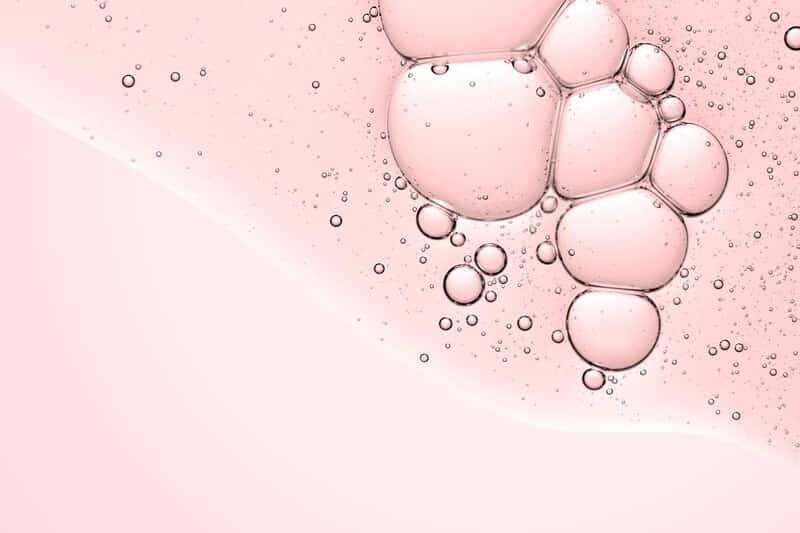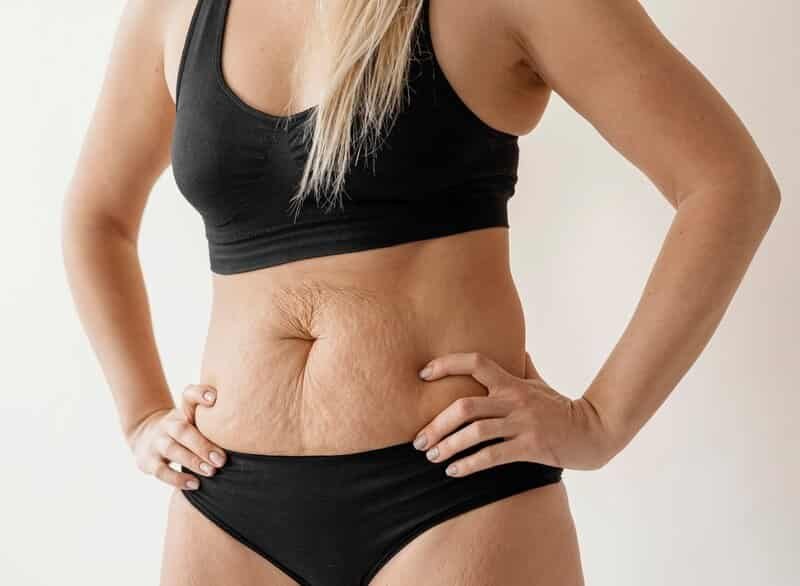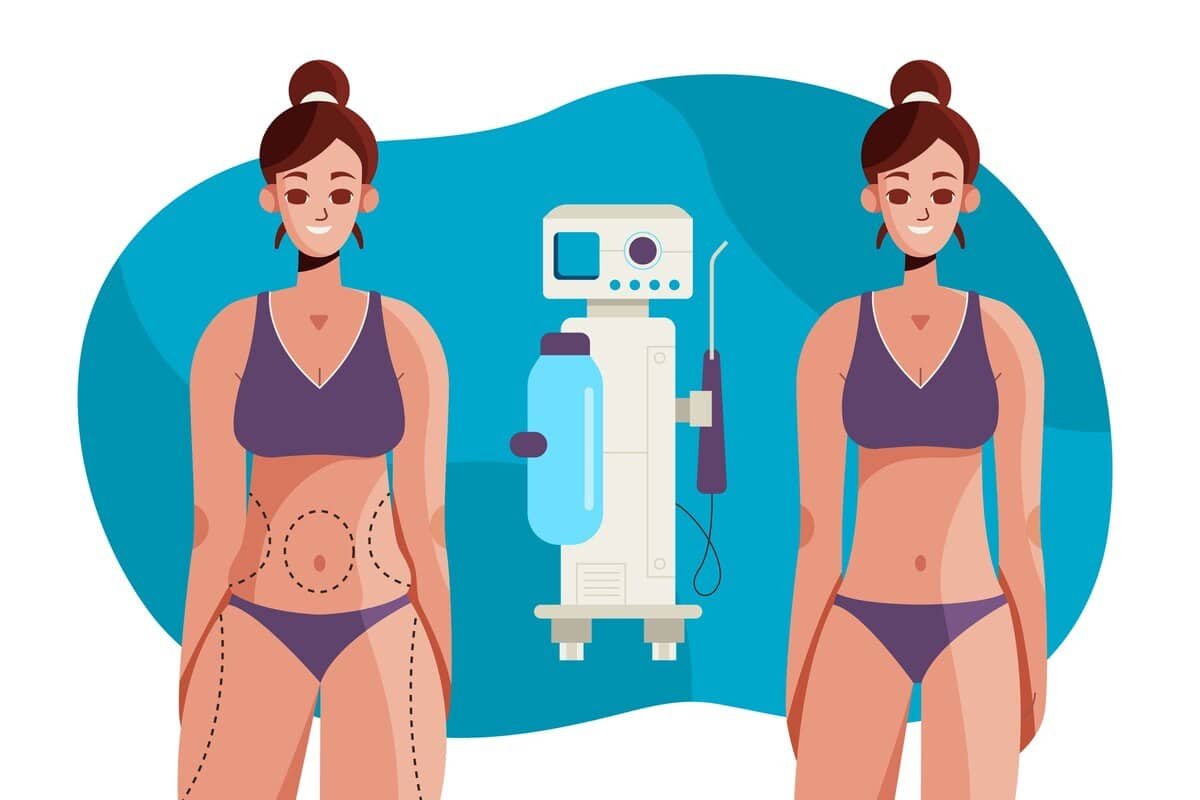In This Article
Introduction
Collagen is a protein that maintains the firmness and elasticity of our skin. It’s also found in our bones, muscles, and tendons. But our bodies produce less collagen as we age, leading to wrinkles and sagging skin.
Stretch marks are another common issue, especially during growth spurts or weight gain. These lines appear when our skin stretches too quickly, causing tiny tears in the dermis layer.
There are many treatments for stretch marks, but one question often arises: whether collagen supplements can help.
What Are Stretch Marks?

Stretch marks, or striae, are those long, narrow streaks on our skin when they stretch quickly, like during pregnancy, puberty, or rapid muscle growth. You’ll often see them on your abdomen, thighs, hips, breasts, upper arms, and lower back.
What’s Collagen All About?
Collagen is a vital protein that is a massive part of our bones, skin, hair, muscles, tendons, and ligaments. It makes up about one-third of our body’s protein. It gives our skin and tissues their structure, strength, and elasticity. As we age, our collagen production drops, leading to wrinkles and less elastic skin, making stretch marks more noticeable. Hence, the idea of taking a supplement to boost collagen levels.
Collagen Supplements and Stretch Marks
Collagen supplements are available in pills, powders, or drinks. They contain hydrolyzed collagen peptides that are easier for our bodies to absorb. While there’s not enough scientific proof that these supplements help stretch marks, some studies suggest that oral collagen can improve skin elasticity and hydration, which might help reduce stretch marks over time. Plus, pairing collagen with vitamin C might boost absorption. This vitamin helps in collagen production and protects against skin damage.
Visit Official Store
Other Ways to Get More Collagen
Besides supplements, plenty of natural ways to boost your collagen levels. Try these:
- Eat foods rich in collagen-building nutrients like vitamin C, zinc, and copper—think citrus fruits, leafy greens, nuts, seeds, and seafood.
- Always wear sunscreen to protect your skin from the sun’s harmful UV rays.
- Quit smoking, as cigarette toxins break down collagen.
- Use skincare products with retinoids or peptides to help stimulate collagen production.
Take care of your skin by making these simple changes!
How Stretch Marks Form
Stretch marks, or striae, happen when our skin stretches beyond its limit and the dermis, the middle layer, tears. They can show up for a variety of reasons:
Causes:
- Rapid Growth: Puberty brings about significant changes and growth spurts, causing our skin to stretch quickly.
- Pregnancy: As our bodies expand to accommodate a growing baby, the skin on our abdomen, breasts, and thighs can stretch significantly.
- Weight Changes: Rapid weight gain or loss can make our skin stretch or shrink quickly, leading to stretch marks.
Skin’s Response to Stretching:
When our skin stretches too fast, the connective tissues in the dermis can break, creating tiny tears. As it heals, these tears form scar tissue, which we see as stretch marks. At first, they might be red or purple due to blood vessels showing through the tears. Over time, they fade to white or silver as the scars mature.
In short, stretch marks are a natural response to skin stretching and can happen to anyone undergoing rapid changes in body size or shape.

Role of Collagen in Skin Health
Collagen is a vital protein that plays a crucial role in keeping our skin firm. This essential component gives our skin strength and elasticity and supports our joints, bones, and connective tissues throughout the body. Let’s take a closer look at what collagen does and why it’s so important:
Function of Collagen in the Skin
Collagen acts like scaffolding for our skin, ensuring it stays firm and robust. It helps maintain the skin’s elasticity and resilience, vital for keeping it smooth and youthful.
How Collagen Impacts Skin Elasticity and Repair
Collagen fibers form a network that allows the skin to stretch and contract, maintaining elasticity and preventing wrinkles and sagging. Collagen also plays a crucial role in skin repair by promoting the regeneration of new skin cells, helping heal wounds, and keeping our complexion healthy.
Related Topics
- Collagen Production and Aging: As we age, our body’s ability to produce collagen decreases, leading to wrinkles and less firm skin. Finding ways to boost collagen production can help counteract these effects.
- Diet and Collagen: Nutrients like vitamin C and amino acids are essential for collagen synthesis. Eating a balanced diet rich in these nutrients can support healthy collagen levels.
- Collagen Supplements: There is a growing interest in collagen supplements, which are said to improve skin health from the inside out. Understanding their benefits and limitations can help you make informed choices.
- Environmental Factors: UV radiation, pollution, and smoking can degrade collagen in the skin. Protecting your skin from these factors can help preserve collagen levels.
- Skincare Products: Many products contain ingredients to boost collagen production or mimic its effects. Anti-aging skincare routines commonly use ingredients like retinoids, peptides, and growth factors.
Understanding collagen’s many roles in skin health can help you make better skincare, diet, and lifestyle decisions to keep your skin healthy and youthful.
Collagen and Stretch Marks
Since collagen plays a vital role in skin elasticity and repair, it makes sense to consider its impact on stretch marks. While collagen supplements may not directly treat stretch marks, boosting your body’s collagen levels can support healthy skin and potentially reduce the appearance of stretch marks over time.
Think about it this way: during rapid growth, pregnancy, and weight changes, our body’s demand for collagen increases. Providing the body with adequate amounts of this essential protein through diet or supplementation can help support skin health during these periods.
Studies and Research on Collagen’s Effectiveness
Collagen is a vital protein that helps preserve the skin’s structure and elasticity. Numerous studies have evaluated collagen’s effectiveness in reducing the appearance of stretch marks. Research suggests that collagen can help improve skin elasticity and hydration, which may contribute to reducing stretch marks over time. However, individual results may vary, and more extensive long-term studies are still needed to understand collagen’s impact on stretch marks fully.
Types of Collagen Treatments
1. Collagen Creams
Topical collagen creams are widely available and marketed as treatments for stretch marks. These creams often contain hydrolyzed collagen, believed to penetrate the skin more effectively. Additionally, they may include other beneficial ingredients like hyaluronic acid, vitamins, and peptides. While some users report improvements, the effectiveness of these creams can vary, and they are generally considered less potent than other forms of collagen treatments.
2. Collagen Supplements
Oral collagen supplements come in pills, powders, or liquids. These supplements aim to boost the body’s natural collagen production from within. Studies have shown that taking collagen supplements can improve skin elasticity and hydration, potentially reducing the appearance of stretch marks. Choosing high-quality supplements and consistently using them is essential to see results.
3. Collagen Injections
Collagen injections are a more direct method of delivering collagen to the skin. Medical professionals typically administer these injections and can target specific areas affected by stretch marks. While they can be effective, they are more invasive and expensive than creams and supplements. The results may be more immediate, but multiple sessions might be required for optimal outcomes.
Results and Effectiveness
The results of collagen treatments for stretch marks can vary based on the type of treatment, the severity of the stretch marks, and individual skin types. Generally, users might see gradual improvements in skin texture and elasticity, reducing the visibility of stretch marks. It’s essential to manage expectations, as eliminating stretch marks is rare. Combining different types of collagen treatments and maintaining a healthy skincare routine can enhance results.
Additional Related Topics
1. Preventative Measures
In addition to treating existing stretch marks, preventative measures can help minimize their formation. These include maintaining a healthy diet rich in vitamins and minerals, staying hydrated, and using moisturizing products to keep the skin supple. Regular exercise can also improve skin elasticity.
2. Other Treatments for Stretch Marks
Besides collagen, other treatments are available for stretch marks, such as laser therapy, microdermabrasion, and chemical peels. These treatments can help stimulate collagen production and improve skin texture. Consulting with a dermatologist can provide insight into the most suitable treatment options based on individual needs.
3. The Role of Genetics
Genetics can play a significant role in the likelihood of developing stretch marks. Understanding this factor can help individuals take proactive skin care and treatment steps to manage and reduce their appearance. Genetic predisposition can influence the skin’s elasticity and how it responds to stretching and injury.
4. The Impact of Lifestyle Factors
Factors such as rapid weight gain or loss, pregnancy, and puberty can all contribute to the development of stretch marks. Maintaining a stable weight, supporting skin health through proper nutrition, and using preventative skincare during high-risk periods can help mitigate the occurrence of stretch marks.
By exploring these related topics and understanding the various factors that influence the formation and treatment of stretch marks, individuals can make more informed decisions about their skincare routines and treatment options.
Other Treatments for Stretch Marks
While collagen treatments can effectively reduce the appearance of stretch marks, there are plenty of other options to consider. Treatments like laser therapy, microdermabrasion, and chemical peels can also help stimulate collagen production and improve skin texture.
Laser Therapy
Laser therapy uses intense light beams to target stretch marks, boosting collagen production and enhancing skin elasticity. Multiple sessions might be needed for the best results, but the treatment is generally safe and has minimal side effects.
Microdermabrasion
Microdermabrasion is a noninvasive procedure in which tiny exfoliating crystals remove the top layer of dead skin cells. This helps improve skin texture and reduce stretch marks. Like laser therapy, you may need several treatments to see noticeable changes.
Chemical Peels
Chemical peels involve applying a solution to your skin, causing it to peel off and reveal smoother, more even-toned skin underneath. This treatment can also stimulate collagen production and improve skin elasticity over time.
Alternative Treatments
- Laser Therapy: Focused light stimulates collagen and elastin production, promoting new skin growth and improving the appearance of stretch marks.
- Microdermabrasion: This non-invasive exfoliation procedure encourages new skin cell growth, potentially reducing stretch mark visibility over time.
Comparison with Collagen Treatments
- Collagen Injections: Unlike laser therapy and microdermabrasion, collagen injections directly fill and smooth out stretch marks by injecting collagen beneath the skin. This can provide immediate, albeit sometimes temporary, results.
Topical Treatments
- Retinoid Creams: These creams Contain Vitamin A derivatives, which help improve skin cell turnover and promote collagen production, gradually improving the appearance of stretch marks.
- Hyaluronic Acid: Known for its hydrating properties, this can help improve skin elasticity and reduce stretch marks when applied regularly.
Natural Remedies
- Coconut Oil: Valued for its moisturizing properties, coconut oil can help keep skin hydrated and may aid in healing stretch marks.
- Aloe Vera: With its soothing and healing properties, aloe vera can be applied directly to stretch marks to help reduce their appearance over time.
Prevention Tips
- Healthy Diet: Eating a balanced diet rich in vitamins and minerals helps maintain skin health and elasticity, potentially preventing stretch marks.
- Staying Hydrated: Drinking plenty of water keeps your skin hydrated and supple, reducing the likelihood of developing stretch marks.
Exploring these various treatments and preventative measures can help you find the best approach to managing stretch marks and maintaining healthy skin.
Advantages and Disadvantages of Various Stretch Mark Treatments
Collagen Treatments
Pros:
- Enhanced skin elasticity and texture.
- A gradual decrease in the visibility of stretch marks.
- Available in various forms (e.g., creams, injections).
Cons:
- Results vary based on individual skin types and the severity of stretch marks.
- Complete elimination of stretch marks is rare.
- Requires regular maintenance to sustain results.
Laser Therapy
Pros:
- Boosts collagen production and encourages new skin development.
- Generally safe with minimal side effects.
- Targeted treatment can yield quicker results.
Cons:
- It often requires multiple sessions.
- It can be costly.
- Some post-treatment discomfort or downtime may occur.
Microdermabrasion
Pros:
- Non-invasive procedure.
- Exfoliates and rejuvenates the skin.
- Improves overall skin texture.
Cons:
- Requires several treatments for noticeable results.
- It may cause temporary redness or irritation.
- Most effective on mild to moderate stretch marks.
Chemical Peels
Pros:
- Results in smoother, more even-toned skin.
- Stimulates collagen production over time.
- It can address other skin issues like pigmentation.
Cons:
- Involves skin peeling and temporary discomfort.
- Requires multiple treatments.
- Not suitable for all skin types.
Topical Treatments
Pros:
- Non-invasive and easy to apply.
- It can be integrated into daily skincare routines.
- It may improve skin cell turnover and hydration.
Cons:
- Results take time and consistent use.
- Effectiveness varies by product.
- It might not be effective for severe stretch marks.
Natural Remedies
Pros:
- Generally safe with minimal risk of side effects.
- It can enhance skin hydration and suppleness.
- Accessible and cost-effective options.
Cons:
- Limited scientific evidence on effectiveness.
- Slower results compared to clinical treatments.
- Outcomes vary depending on the remedy used.
Here’s a summary table:
| Aspect | Description |
|---|---|
| What are Stretch Marks? | Long, narrow streaks on skin caused by rapid stretching |
| Role of Collagen | Protein that maintains skin firmness and elasticity |
| Collagen Supplements | May improve skin elasticity and hydration |
| Types of Collagen Treatments | 1. Collagen Creams 2. Oral Supplements 3. Collagen Injections |
| Other Treatments | – Laser Therapy – Microdermabrasion – Chemical Peels – Retinoid Creams |
| Natural Remedies | – Coconut Oil – Aloe Vera |
| Prevention Tips | – Healthy Diet – Staying Hydrated |
| Effectiveness | Results vary; gradual improvements in skin texture and elasticity |
| Advantages of Collagen | Enhances skin elasticity, promotes tissue regeneration |
| Limitations | Complete elimination of stretch marks is rare |
Key Points Explained:
- Stretch Marks: These are visible lines on the skin caused by rapid stretching, often due to growth, pregnancy, or weight changes.
- Role of Collagen: Collagen is crucial for maintaining skin elasticity and structure. As we age, collagen production decreases, potentially making stretch marks more noticeable.
- Collagen Treatments: Various forms of collagen treatments are available, including topical creams, oral supplements, and injections. Each has its own advantages and potential effectiveness.
- Alternative Treatments: Other options like laser therapy, microdermabrasion, and chemical peels can also help reduce the appearance of stretch marks by stimulating collagen production and improving skin texture.
- Natural Remedies: Some people find success with natural remedies like coconut oil and aloe vera, which can help improve skin hydration and elasticity.
- Prevention: A healthy diet rich in vitamins and staying hydrated can support skin health and potentially prevent stretch marks.
- Effectiveness: While collagen treatments can improve skin elasticity and hydration, results vary among individuals. Complete elimination of stretch marks is rare, but many treatments can reduce their appearance over time.
- Advantages: Collagen treatments can enhance skin elasticity and promote tissue regeneration, which may help in reducing the visibility of stretch marks.
- Limitations: It’s important to manage expectations, as completely eliminating stretch marks is uncommon. Consistent treatment and patience are often required to see noticeable improvements.
This summary provides an overview of the key points regarding collagen’s role in treating stretch marks, along with other relevant information about stretch mark treatments and prevention.
Conclusion
After reviewing the research, it’s clear that collagen plays a significant role in treating stretch marks. Studies show that collagen can help boost skin elasticity and promote the regeneration of damaged skin tissues. Since this natural protein is abundant in our bodies, it contributes to the dermal structure, making it an effective ingredient in skin care treatments to reduce stretch marks.
Summary of Findings
- Enhanced Skin Elasticity: Collagen supplements and topical applications can increase skin elasticity, helping to prevent new stretch marks and minimize existing ones.
- Tissue Regeneration: Collagen helps repair and regenerate skin tissues, speeding up the healing process of stretch marks.
- Hydration and Firmness: Collagen improves skin hydration and firmness, which are crucial factors for maintaining healthy and resilient skin.
Final Thoughts on Collagen’s Role in Treating Stretch Marks
In conclusion, collagen is a promising solution for managing stretch marks. Its ability to boost skin elasticity, support tissue regeneration, and improve overall skin health makes it a valuable addition to any skincare routine focused on this common issue. With more research and consistent use of collagen-based products, we might see even more impressive results in the future.
Frequently Asked Questions (FAQs)
1. What are stretch marks?
Stretch marks are those long, narrow lines that show up when your skin stretches or shrinks too quickly, causing the collagen and elastin fibers to break. You might notice them during significant changes like puberty, pregnancy, or rapid weight changes.
2. Can collagen help reduce stretch marks?
Absolutely! Collagen can improve skin elasticity and encourage tissue regeneration, which helps reduce the appearance of stretch marks. Whether you take collagen supplements or use topical treatments, they can support and repair your skin’s structure.
3. How do laser therapies work for stretch marks?
Laser therapy helps by stimulating collagen production and encouraging new skin growth, which lessens the visibility of stretch marks. Different types of lasers, like fractional and pulsed dye lasers, specifically target stretch marks, improving both texture and color over multiple sessions.
4. What is microdermabrasion, , particular and how does it help?
Microdermabrasion is a non-invasive exfoliation procedure that boosts new skin cell growth, which can help reduce the visibility of stretch marks over time. This process uses a particular device to gently remove the outermost layer of dead skin cells, leading to smoother, more even-toned skin.
5. Are collagen injections safe?
Collagen injections are generally safe but might cause temporary swelling or discomfort. It’s always best to consult a qualified dermatologist or medical professional to determine if this treatment suits your skin type and condition.
6. What are retinoid creams altogether, and how do they work?
Retinoid creams contain Vitamin A derivatives that encourage skin cell turnover and collagen production, gradually improving the appearance of stretch marks. Regular use can enhance skin texture and elasticity, making the marks less noticeable over time.
7. Can hyaluronic acid remove stretch marks?
Hyaluronic acid may not altogether remove stretch marks, but its hydrating properties can improve skin elasticity and make them less noticeable. It helps by attracting and retaining moisture in the skin, plumping and smoothing the surface.
8. Is coconut oil effective for stretch marks?
Thanks to its moisturizing properties, coconut oil can help keep skin hydrated and may aid in healing stretch marks. Rich in fatty acids and antioxidants, it nourishes the skin and can improve its overall health, potentially reducing the visibility of stretch marks.
9. What role does aloe vera play in stretch mark treatment?
Aloe vera’s soothing and healing properties can help reduce the appearance of stretch marks over time when used regularly. It promotes skin regeneration and moisture retention, enhancing the skin’s natural repair processes.
10. How does a healthy diet prevent stretch marks?
A balanced diet rich in vitamins and minerals supports skin health and elasticity, which can prevent stretch marks. Nutrients like Vitamin C, Vitamin E, zinc, and omega-3 fatty acids are essential for maintaining the skin’s structural integrity and resilience.
11. Does staying hydrated help with stretch marks?
Staying hydrated keeps your skin supple and reduces the likelihood of developing stretch marks. Drinking plenty of water supports skin elasticity and overall health, making it more resistant to rapid stretching or shrinking damage.
12. What are the pros and cons of chemical peels for stretch marks?
Chemical peels can smooth and even out skin tone while stimulating collagen production, but they may cause temporary discomfort and aren’t suitable for all skin types. The procedure involves applying a chemical solution to exfoliate and remove damaged outer layers, promoting new, healthier skin growth.
13. How long does it take to see results from topical treatments?
Results from topical treatments can take time and consistent use, often several weeks to months, depending on the product. Patience and regular application are crucial to achieving noticeable improvements in stretch marks.
14. Are natural remedies effective for stretch marks?
Natural remedies are generally safe and accessible, but scientific evidence of their effectiveness is limited. They often work slowly and maybe most effective when combined with other treatments. Common remedies include oils, butter, and plant extracts known for their moisturizing and healing properties.
15. What should I look for in a stretch mark treatment product?
Look for products with ingredients known to boost collagen production, improve hydration, and enhance skin elasticity, such as retinoids, hyaluronic acid, or natural oils. Also, products with positive reviews and clinical backing should be considered to ensure effectiveness and safety.

Florence
Florence Delisy is a dedicated skincare and beauty expert with extensive industry experience. Certified in skincare and cosmetology from University of the Arts London, she specializes in personalized skincare routines, anti-aging treatments, and beauty consultations. Florence is committed to helping clients achieve healthy, radiant skin through tailored solutions and education on effective skincare practices.







